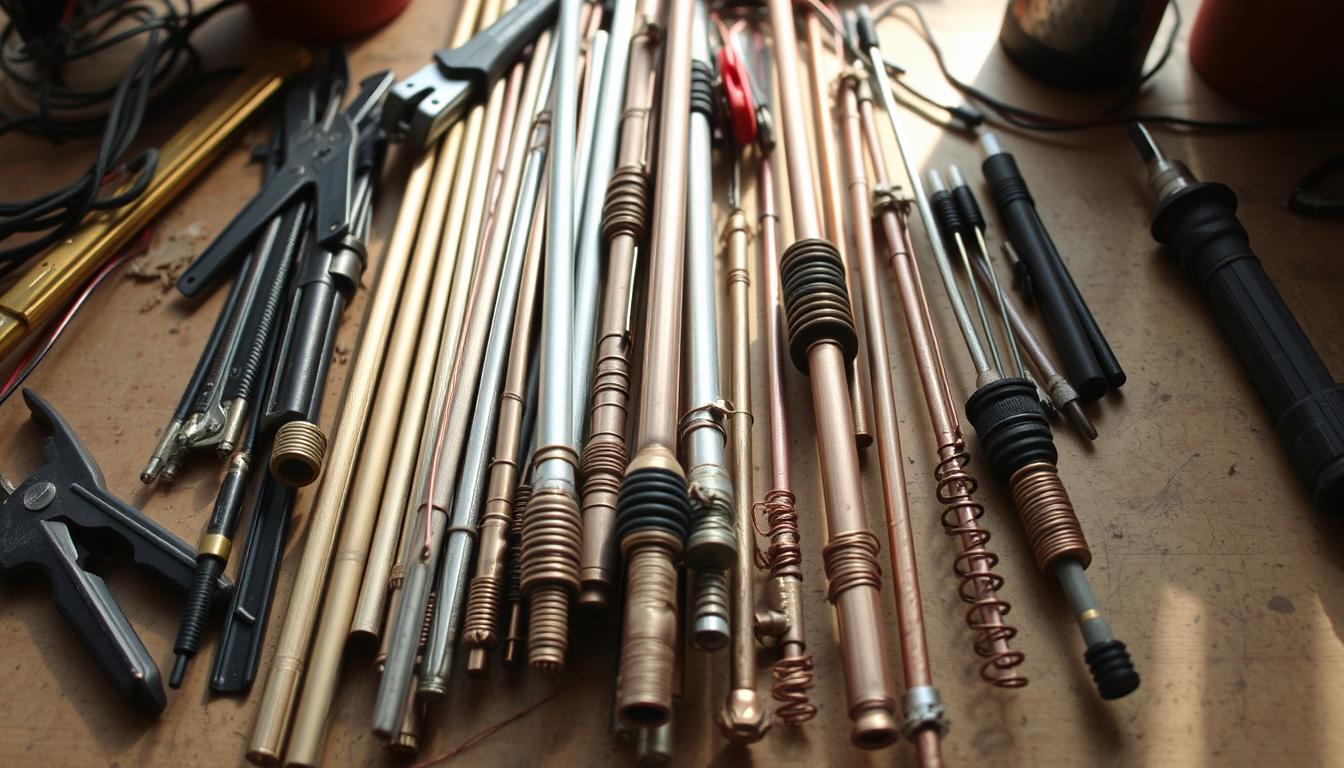Gardening enthusiasts are discovering a simple way to boost plant growth using basic materials like copper wire. This method taps into natural energy to help gardens thrive without harsh chemicals. Margie Royal’s 2024 experiment proved its effectiveness—her blueberry harvest tripled after using repurposed Christmas light wires.
The concept isn’t new. Finnish geophysicist Karl Lemström noticed plants growing faster near the aurora borealis in 1868. Today, eco-conscious gardeners are reviving this technique to reduce reliance on synthetic fertilizers. With minimal effort, you can create your own tools to enhance your garden’s vitality.
Key Takeaways
- Simple DIY method using copper wire improves plant growth.
- Margie Royal’s blueberries thrived with homemade solutions.
- Historical roots trace back to 19th-century observations.
- Modern interest grows due to eco-friendly benefits.
- Step-by-step guides make it accessible for beginners.
What Are Electroculture Rods?
A century-old gardening secret uses atmospheric electricity to supercharge plants. These tools act as conductive antennas, harvesting energy from the air (80%) and soil (20%).
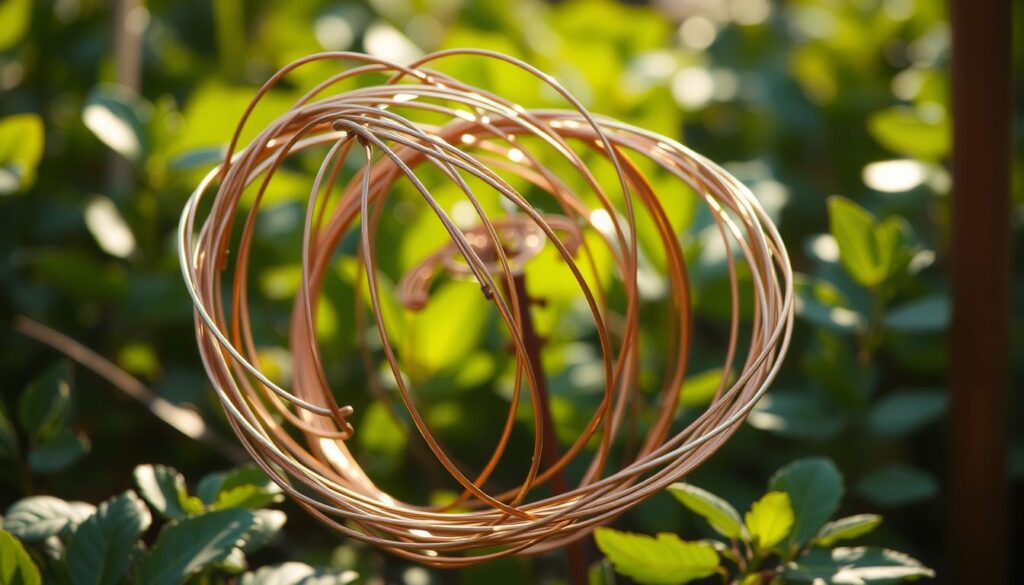
- Ighina spirals: Vertical rods wrapped tightly with copper wire.
- Lakhovsky coils: Open loops placed around plants.
| Type | Design | Best For |
|---|---|---|
| Ighina Spiral | Wire-wrapped rod | Raised beds |
| Lakhovsky Coil | Circular open loop | Container plants |
French inventor Justin Christofleau proved their power in the 1920s. His 25-foot wooden posts with copper-zinc wires doubled crop yields.
“Strawberry production increased by 75% in controlled tests using these antennas.”
Today, gardeners use smaller versions (3–6 feet tall). The copper wire may stimulate nutrient absorption by conducting weak electromagnetic fields.
Materials Needed for Electroculture Rods
You can craft effective garden tools with simple household items. Gather basic materials like copper wire and a wooden dowel to start. Even beginners can assemble these with minimal effort.
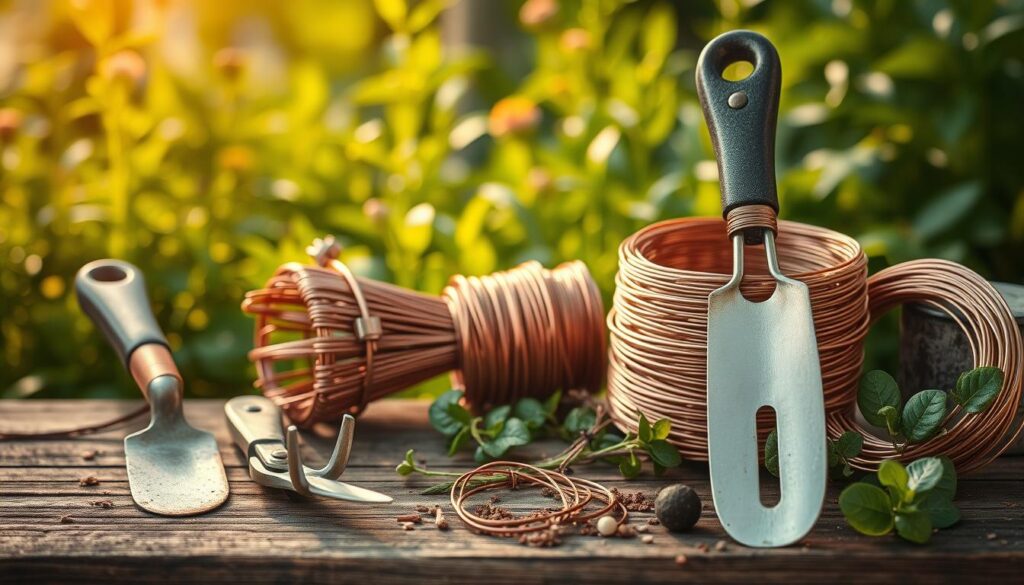
Essential Materials
For each rod, you’ll need 10–20 feet of 12- or 14-gauge bare copper wire. An untreated wooden dowel (1–2 inches thick) works best as the base. Household items like markers or soda cans help shape the wire spirals.
Optional Tools
Wire cutters are essential for trimming. Sandpaper smooths rough edges on the dowel. For advanced designs, plastic cable staples or weatherproof sealant add durability.
Pro tip: Repurpose old Christmas lights or cables, just like Margie Royal did. It’s a budget-friendly way to test the method before investing in new tools.
Step-by-Step Guide to Making Electroculture Rods
Transform your garden with a simple DIY project using everyday materials. This guide walks you through creating a natural antenna to harness energy for healthier plants. You’ll need a wooden stick, copper wire, and about 30 minutes.

Preparing the Wooden Stick
Start by cutting a dowel or branch 8 inches taller than your plant’s mature height. For tomatoes, a 36-inch stick works well. Sand rough edges to prevent splinters.
Pro tip: Decorative walking sticks add a rustic touch while serving the same purpose.
Wrapping the Copper Wire
Begin at the base, wrapping the copper wire upward at a 45° angle. Keep each spiral spaced 1 inch apart for consistent energy flow. Use needle-nose pliers for tight coils.
Leave 4–6 inches of wire loose at the top. This part will contact the atmosphere.
Finishing the Tool
Secure the wire by twisting the end around the stick. Bury the bottom 8 inches in soil for grounding. File sharp wire ends to avoid injuries.
Safety note: Wear gloves when handling cut wire edges.
How to Use Electroculture Rods in Your Garden
Maximize your garden’s potential with strategic placement of natural energy conductors. Position tools 12-18 inches from plants on the southern side for optimal sun exposure. Margie Royal achieved triple blueberry yields by facing her setup northward.

Different crops require unique approaches. Tomatoes and blueberries thrive with individual conductors, while leafy greens can share one. Tilt loops 30° downward for better energy flow across garden beds.
| Crop Type | Spacing | Special Notes |
|---|---|---|
| Tomatoes/Blueberries | 1 per plant | Use 36″ height |
| Lettuce/Spinach | 1 per 3 plants | 18″ height sufficient |
| Beans/Peas | 1 per 2 plants | Pair with nitrogen-fixers |
Adjust depth seasonally—bury deeper in winter to protect from frost. The soil contact maintains consistent energy transfer year-round. Royal documented 28% faster growth in winter-protected setups.
Track progress weekly like professional growers. Compare electrified and control plants to measure yield differences. Simple notebooks work better than digital apps for spotting subtle changes.
Pro tip: Morning checks reveal the clearest differences in plant vitality. Energy absorption peaks during dawn hours.
Benefits of Using Electroculture Rods
Natural energy techniques offer surprising advantages for modern gardeners. Studies show these methods boost plant growth while reducing reliance on synthetic fertilizers. From larger harvests to healthier crops, the benefits are backed by decades of research.
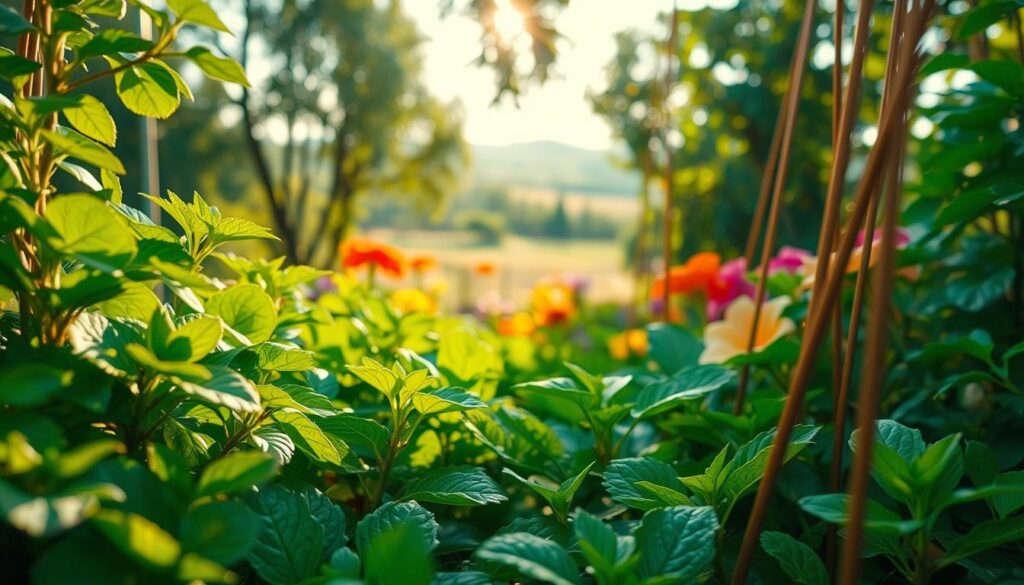
Farmers report significant yields increases—Christofleau’s trials doubled outputs, while modern tests saw 22% higher oat production. Leafy greens and fruits respond particularly well, with cabbages growing 75% larger in electrified plots.
| Benefit | Evidence | Impact |
|---|---|---|
| Higher Nutrient Density | French strawberries had 15% more vitamin C | Healthier produce |
| Pest Resistance | 40% fewer aphids in berry patches | Less need for pesticides |
| Water Efficiency | Improved soil moisture retention | Reduced irrigation |
Pro tip: These tools last 5–7 seasons, making them a cost-effective alternative to chemical treatments. For legal guidelines on sustainable practices, check local regulations.
Margie Royal’s experience proves even small-scale gardens thrive. Her blueberries not only yielded more but required less maintenance. The system works year-round, adapting to seasonal changes effortlessly.
Does Electroculture Really Work?
The debate around natural energy gardening methods continues to spark discussions among experts and hobbyists alike. While some dismiss it as scientifically unfounded, others point to tangible results like Margie Royal’s tripled blueberry harvest.
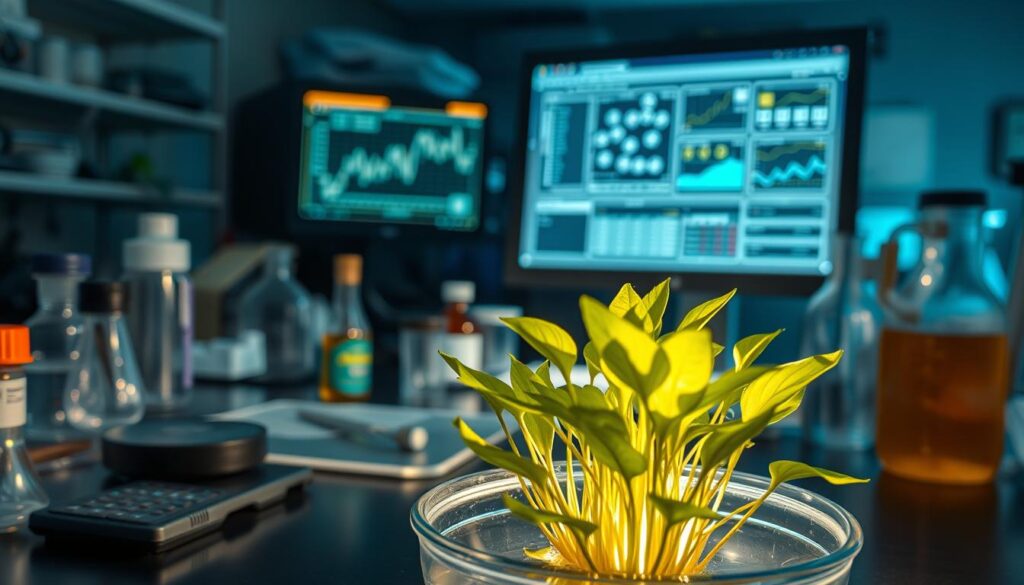
Studies reveal a divide. A 2021 Romanian research project documented an 18% acceleration in pea growth. Meanwhile, Washington State University’s Dr. Linda Chalker-Scott labels the practice a “horticulture myth,” citing limited peer-reviewed content.
| Study | Findings | Limitations |
|---|---|---|
| USDA Meta-Analysis (2023) | 12–15% yield increase | Small sample sizes |
| Romanian Agronomy Journal (2021) | 18% faster pea growth | Single-crop focus |
Enthusiasts often share dramatic anecdotes—200% boosts in yields—but controlled experiments show more modest gains. Royal’s 4-year comparison, however, stands out for its consistency. Her electrified blueberries consistently outperformed control plants.
Key takeaway: While not a miracle solution, these methods may complement traditional gardening when implemented correctly. The USDA’s findings suggest it’s worth experimenting with, especially for organic growers.
Conclusion
Margie Royal’s success proves how simple gardening experiments can yield big results. Her 2024 expansion into jam-making shows the real-world benefits of this method. With just $5 in materials, the potential rewards make it worth testing in your own space.
Start small with 2-3 copper-wire tools in herb gardens or berry patches. Share your findings like Royal did—community knowledge helps everyone grow better. Plus, the spirals add a touch of beauty to vegetable beds.
Even skeptics admit there’s little risk in trying. As Royal says, “Let your garden convince you.” Whether you seek bigger harvests or sustainable practices, this approach offers a creative twist on traditional gardening.

